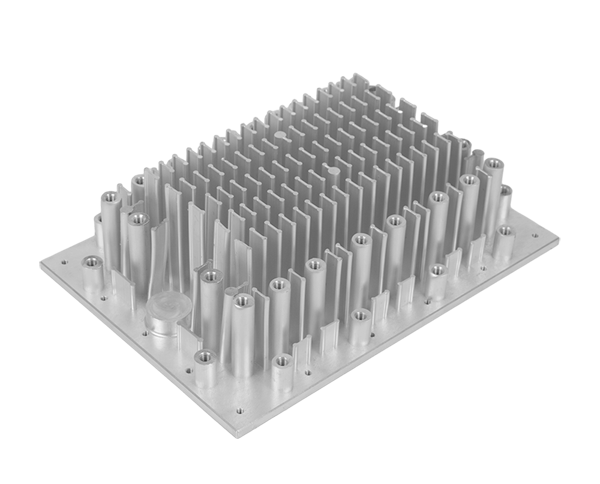2024-11-08 hits:0 source:News

Die - casting products are widely used in various industries, and passivation treatment plays a crucial role in enhancing their performance and durability.
1. Introduction to Passivation Treatment
Passivation is a chemical process that modifies the surface of die - casting products. The main purpose is to create a protective layer on the surface. This layer helps to prevent corrosion, which is especially important for die - castings made from metals such as aluminum, zinc, or magnesium. These metals are often used in die - casting due to their good casting properties, but they are susceptible to corrosion in certain environments.
The passivation process typically involves immersing the die - casting product in a chemical solution. The chemical solution reacts with the surface of the metal, forming a thin, stable, and passive film. This film is usually composed of oxides, hydroxides, or other compounds that are less reactive than the base metal. For example, in the case of aluminum die - castings, a common passivation treatment may use chromate - based solutions. However, due to environmental concerns, there is an increasing trend towards using chrome - free passivation solutions, such as phosphate - based or rare - earth - based solutions.
2. Steps in Passivation Treatment
Surface Preparation: Before passivation, the die - casting product needs to be properly prepared. This includes cleaning the surface to remove any dirt, grease, or casting residues. Mechanical cleaning methods such as sandblasting or grinding can be used to remove surface imperfections. Chemical cleaning with solvents or alkaline cleaners is also common. The goal is to have a clean and smooth surface for the passivation reaction to occur effectively.
Passivation Bath: The die - casting product is then immersed in the passivation solution. The time of immersion depends on various factors such as the type of metal, the desired thickness of the passive layer, and the concentration of the passivation solution. For example, in a phosphate - based passivation for zinc die - castings, the immersion time may range from 1 - 5 minutes. During immersion, the chemical reaction takes place, and the passive layer gradually forms on the surface.
Rinsing and Drying: After passivation, the product is removed from the passivation bath and thoroughly rinsed with clean water. This is to remove any remaining passivation solution on the surface. Incomplete rinsing can lead to problems such as staining or continued chemical reactions. After rinsing, the product is dried, either by air drying or using a drying oven. The drying process should be carefully controlled to avoid re - contamination of the surface.
3. Benefits of Passivation Treatment
Corrosion Resistance: As mentioned earlier, the main benefit is the improved corrosion resistance. The passive layer acts as a barrier between the metal surface and the corrosive environment. This can significantly extend the service life of die - casting products, especially in applications where they are exposed to moisture, chemicals, or other corrosive agents.
Aesthetic Appeal: Passivation can also enhance the appearance of die - casting products. The smooth and uniform passive layer can give the product a more attractive finish. This is important in consumer products such as electronics housings or decorative items.
Improved Paint Adhesion: In cases where the die - casting product is to be painted, passivation can improve the adhesion of the paint. The passive layer provides a more suitable surface for the paint to bond to, resulting in a more durable and high - quality paint finish.
passivation treatment is an essential process for die - casting products. It not only protects the products from corrosion but also offers other benefits such as improved aesthetics and paint adhesion.
Read recommendations:
lf you have any questions or comments, you can leave us a message and we will reply to you as soon as possible
